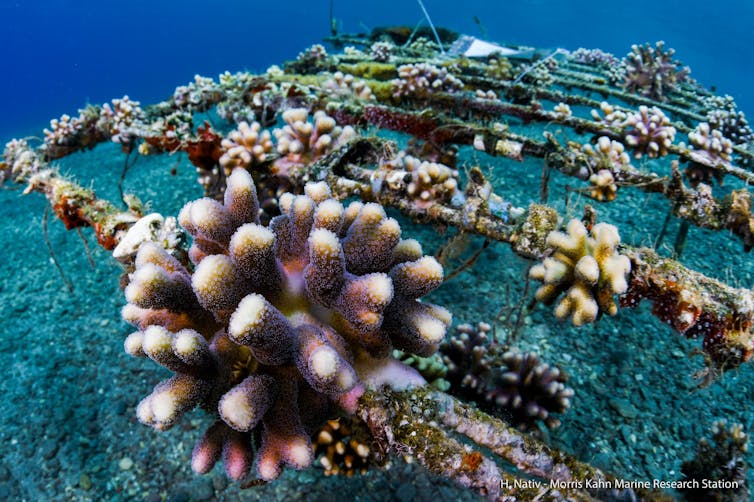Achi news desk-
Coral reefs, like the sprawling cities of the sea, support an estimated 25% of all the plants and animals in the ocean. Worldwide, 1 billion people depend on these ecosystems for food, income and coastal protection.
Unfortunately, coral reefs are fraught with endless sources of stress, from climate change and pollution to overfishing and unsustainable coastal development. The outlook for corals and the reefs they build is not good: without strict action on greenhouse gas emissions scientists predict that conditions in tropical coastal waters will become inhospitable to corals by the year 2100. If we want coral reefs in our future, we need to do that. be proactive.
Scientists, conservationists and local communities are working to recover unhealthy reefs. There are many options for doing this: encouraging some coral in the laboratory to produce huge batches of coral larvae that can be released into the wild, for example, or selectively breeding and genetically engineering specimens to create “super corals ” which can withstand stress.
Stock Photo Serge Melesan/Alamy
Although coral restoration has become a multi-million dollar business, many restoration projects fail to transform the ecosystem’s long-term prospects, wasting time and resources and raising questions about the ethics of putting corals “back to die”, as Ian Enochs, a US marine biologist who leads the National Oceanic and Atmospheric Administration’s reef monitoring program in the Atlantic Ocean and Caribbean Sea recently described it.
In our new paper, we propose a new way of thinking about coral restoration: making environmental conditions, such as temperature and nutrient levels, a determining factor in whether reef restoration should proceed. This might seem obvious, but our survey of academic research on coral restoration from 1984 to 2022 suggested that these questions have been neglected.
Reefs tomorrow
Coral restoration has so far been very reactive. Efforts have focused on recovering reefs in areas where they previously existed, although those reefs have recently died. When the cause of a dead reef is distinct and known, such as a one-off pollution event, this may be an appropriate response (as long as the cause of death has been removed).
But degraded coral reefs are more often the result of stress that is not easy to deal with, such as marine heatwaves caused by climate change or massive coastal development. It is no surprise that efforts to restore reefs in areas plagued by these problems often fail – the original issue is still present.
We believe there are two ways to give coral reef restoration projects the best possible chance of success. First, when restoring corals to a dead reef, do so with detailed knowledge of the environmental conditions in the area – as they are today and as they are expected to be in the future. This information can show which coral species are most sensible to use, how they should be grown, when to plant them in the wild and how to connect them to the seabed.

H. Nativ/Morris Kahn Marine Research Station
Option two is to cultivate new coral reefs in areas where they have not been present historically, but where environmental conditions in the coming years and decades may be favorable. We may find these areas at the edges of current coral reefs. Other areas may emerge as the resolution of environmental monitoring improves.
Go with the flow
It is clear that there is a need for innovation in coral restoration; a host of ethical, political, economic and ecological questions need to be addressed. It is time to ensure that these decisions are based on a solid foundation of environmental knowledge – to break the recovery cycle of failure that we are locked into.
We must recognize that although a coral reef used to be in a certain place, it may be more effective now (or in the near future) to “restore” that reef elsewhere. Coral restoration could become more goal-oriented and progressive.
There are technical limitations to measuring environmental conditions and predicting what the future will be like. Nevertheless, this new approach enables us to work with environmental change rather than fight against it. If successful, it could help coral reef ecosystems survive for future generations to enjoy.

No time to read about climate change as much as you’d like?
Get a weekly digest in your inbox instead. Every Wednesday, The Conversation’s environment editor writes Imagine, a short email that goes a little deeper into just one climate issue. Join the 30,000+ readers who have subscribed so far.

